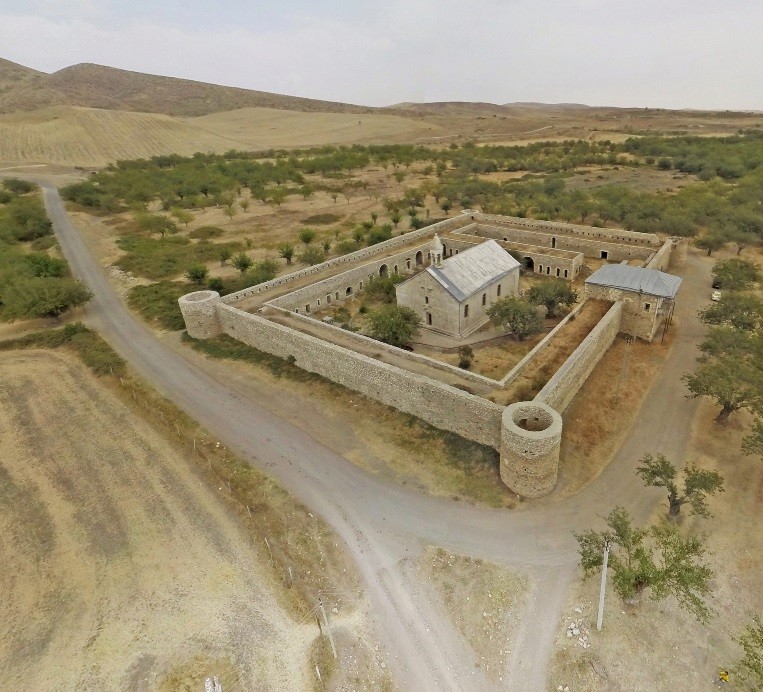Amaras Monastery is an Armenian monastery in the disputed region of Nagorno-Karabakh, near the village of Sos in the Martuni Province of the Nagorno-Karabakh Republic. It was a prominent religious and educational center in medieval Armenia.
According to medieval chroniclers Faustus Byuzand and Movses Kaghankatvatsi, St. Gregory the Illuminator found the Amaras Monastery at the start of the fourth century.
Amaras was the burial place of St. Gregory the Illuminator's grandson, St. Grigoris (died in 338). A tomb built for his remains still survives under the apse of the nineteenth-century church of St. Grigoris.
At the beginning of the fifth century Mesrop Mashtots, the inventor of the Armenian Alphabet, established in Amaras the first-ever school that used his script.
The monastery was plundered in the thirteenth century by the Mongols, destroyed in 1387 during Tamerlane's invasion, and demolished again in the sixteenth century. It underwent radical restructuring in the second quarter of the seventeenth century when the surviving defensive walls were constructed.
Amaras was later abandoned, and in the first half of the nineteenth century the monastery served as a frontier fortress for Russian imperial troops.
The Armenian Apostolic Church reclaimed the monastery in 1848. The monastery's church appears to have been severely damaged during the period of military occupation, to the extent that a new church had to be constructed on the site of the old one. This new church, dedicated to St. Grigoris, was built in 1858 and paid for by the Armenians of the city of Shusha. It still survives and is a three-nave basilica constructed from bright white stone.
The monastery was abandoned during the Soviet period.
St. Grigoris was originally buried at the eastern end of the now vanished St. Gregory church. In 489 Vachagan III the Pious, king of Caucasian Albania, renovated Amaras, restoring the church and constructing a new chapel for the remains of St. Grigoris. In later centuries a church was built over this chapel-tomb.
Under the altar of the St. Grigoris church is a tomb chamber reached at its western end by twin flights of steps. A blocked passage at its eastern end indicates there was originally an entrance from that direction as well. The barrel-vaulted tomb chamber is 1.9m wide, 3.75m long, and 3.5m high. The upper half of the structure originally projected 1.5 to 2m above ground level, but it is now entirely underground. Carved details date it stylistically to the 5th century.










